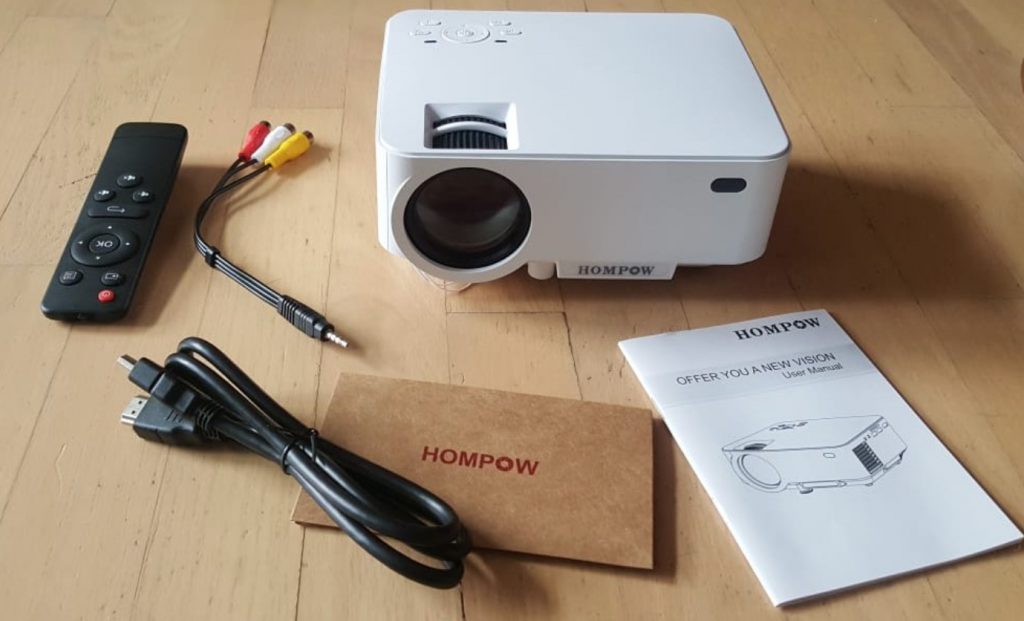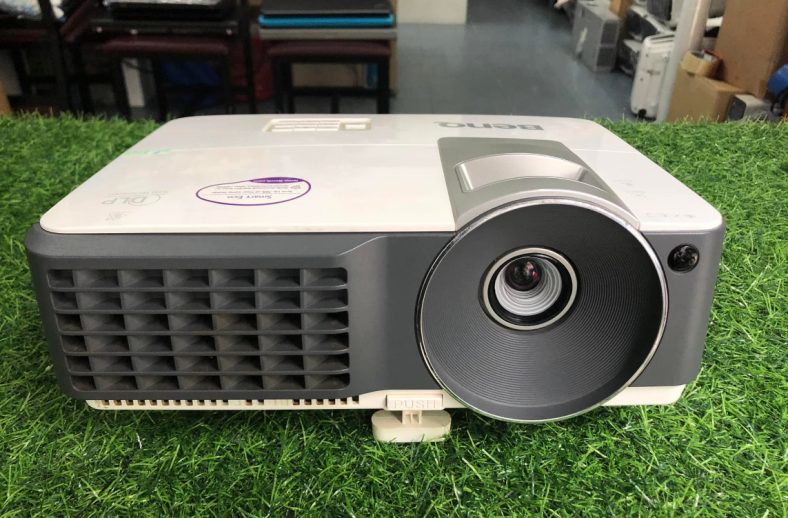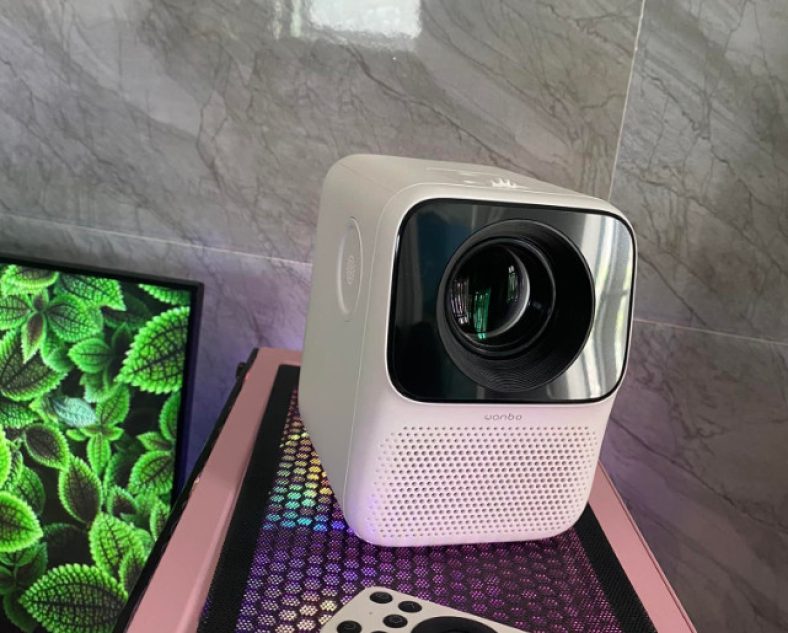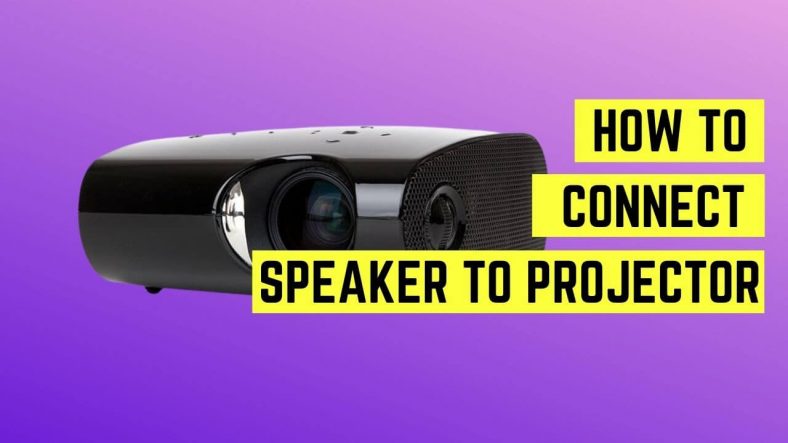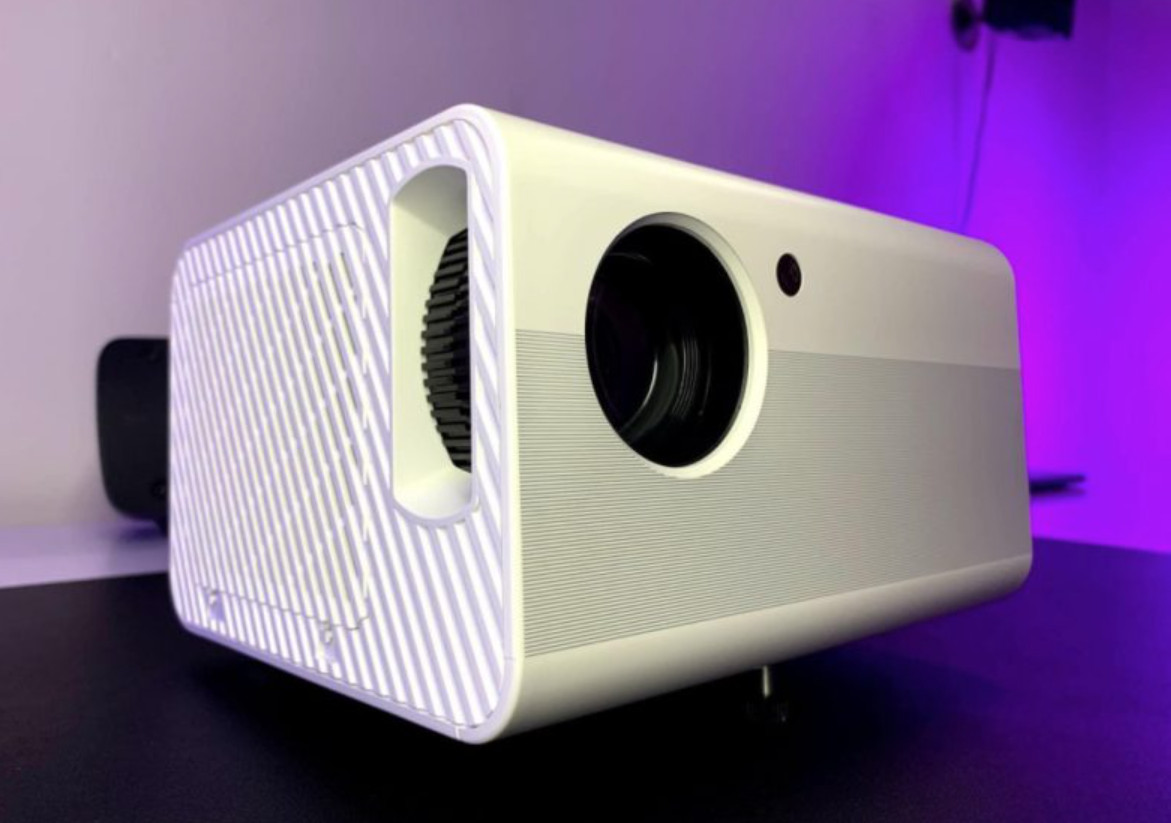
How does a projector work? (LCD, DLP, CRT, Overhead, Interactive)
For decades, projectors have revolutionized the viewing experience by providing wonderful images with accurate colors. So, how does the projector work?
This output device generally connects to computers or other devices to display images onto a wide flat surface.
This post will go over what projectors are and how each type work. Let’s join us!
Table of Contents
What Is A Projector?
A projector is an electro-optical gadget that expands the size of pictures displayed. It operates on the principle of a light projection that transmits an image signal to a remote display.
These gadgets are small, lightweight, and have a compact design. However, they perform an excellent job.
Uses
People use such gadgets as an alternative to televisions and monitors for big gatherings.
The equipment can display a big picture for the audience to see. The audience includes viewers sitting on the floor, students in the room, and staff in the office.
Components
A projector comes with numerous components, each of which is in charge of a certain task. These components differ depending on the projector’s design.
- Projection lens
This structure is a set of lens components joined in the correct order. The lens produces an optical system that focuses light from the lamp into a tiny picture on display.
Related: How many Watts does a Projector use?
- Lamphouse and bulb
Electrical controllers adjust the lamp’s power to maintain a specified degree of color accuracy and brightness. The bulb is the illumination source that generates high-intensity light from the lamps.
- Built-in speaker
Current projectors include built-in speakers that give an amazing sound quality. They’re simple to set up and don’t require external speakers.
- Cooling system
The two-way cooling system supplies a steady temperature to keep the device stable and durable.
- Prisms
Digital projectors have dichroic mirrors to process white light. They can also reflect red, blue, and green lights. In some designs, these mirrors may even recombine light beams.
- Color filters and wheels
Color filters and color wheels in digital projectors add colors to the white light beams.
- Air duct
Manufacturers design the air duct in a way that it can absorb and weaken the noise while lowering air noise by about 20%.
- Dust filter
Dust can enter the system and accumulate over time, degrading its quality. The projectors contain dust filters that are replaceable and have a dustproof net to keep dust out.
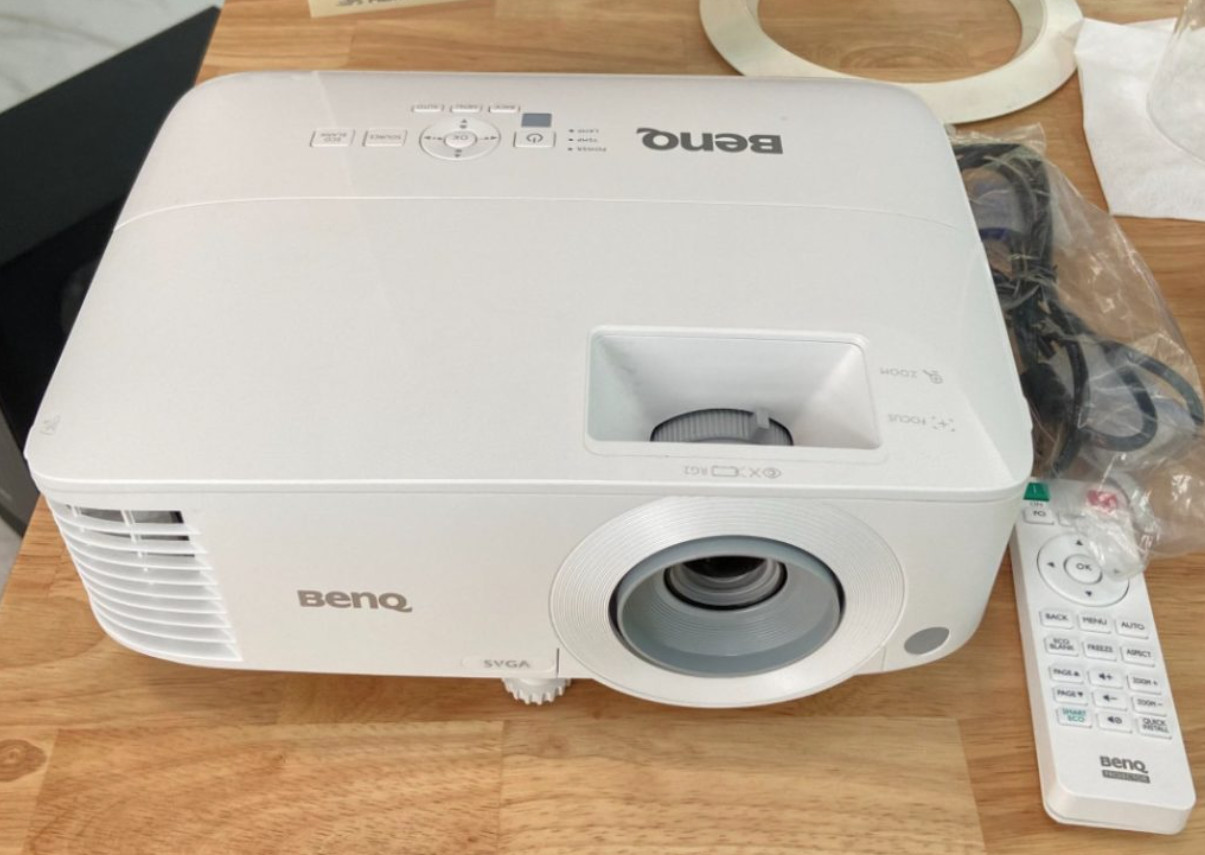
How Does Projector Work?
This section will discuss some types of projectors and explain how they work.
DLP
DLP projectors are a more modern invention. Texas Instruments was the first to manufacture them in 1987.
These models come with a technology called Digital Light Processing. It employs a microchip with around two million micromirrors.
The DMD (Digital Micromirror Device) mirrors stay in either an on or off position. An electronic system determines the tilting angle of these mirrors.
If the mirrors are at the “on” position, they reflect lights in whatever hue it arrives. They bounce rays away from the projection lens when turned off.
The working process of these machines is as follows:
- The color wheel comes into play first when the light beam moves in. It will alternate between light green, blue, and red.
- The white beam travels through the prism and lands on the DMD chip. The mirrors there reflect the beam through the lens and then onto the display.
- The image comes in different colors, but it changes very fast. We will see the RGB changes as one vivid picture.
- The screen is also sensitive to the Rainbow Effect as a result of the color wheel.

LCD
These devices are digital projectors. They employ a projection technology known as Liquid Cathode Display.
LCD projectors feature panels with thousands of mirrors on them. Pixels are the name for these mirrors.
The mirrors are adjustable so that you move them easily. They either reflect or divert light depending on their location.
3LCD projectors are the most sophisticated type of LCD technology. They produce visuals with a total of three panels.
Here is how an LCD projection system works:
- Dichroic mirrors collect the light beams from the source. It splits the light into green, blue, and red beans.
- Then, the three panels reflect different beams, each a different color.
- The LCD panels either deflect or reflect the colored rays with their pixels to create pictures in different hues.
- A dichroic prism works to separate the three various forms of the image, including green, red, and blue.
- Next, the prism recombines the colors and forms one picture.
- The created picture will go through the projection lens and onto the monitor, displaying millions of hues.
Related:
– How do I use USB to link my phone to my projector?
– Which projectors are used in movie theaters?
LCD projectors deliver data from various media, including DVDs and PCs. They do not require much energy for the whole process.
3LCD models lack the Rainbow Effect. They offer higher contrast levels.
Single-panel LCD monitors operate slightly differently since the Rainbow Effect influences the output.
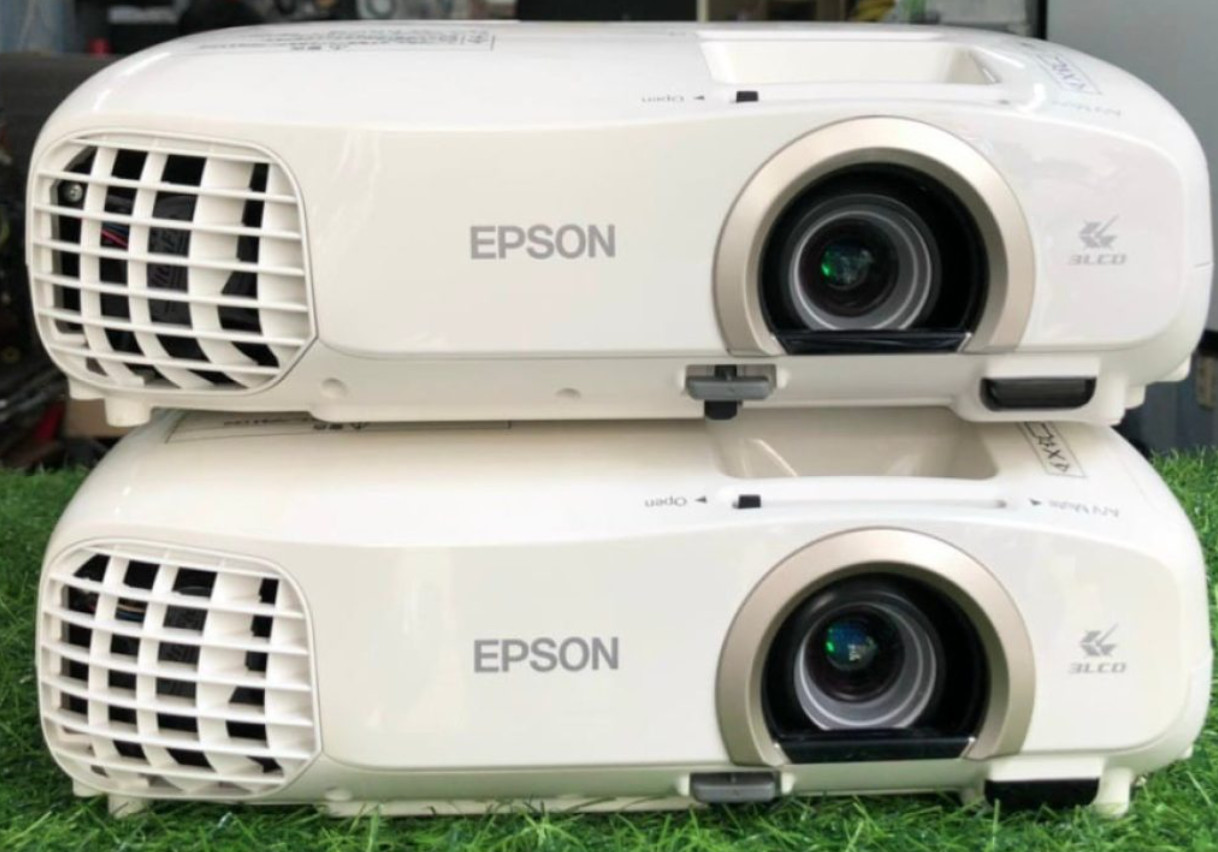
LED
LED projections are the most commonly purchased projectors. This technology allows you to make mobile projectors.
The projectors can also work with cell phones and other portable electronic gadgets.
Despite their compact size, these projection systems produce outstanding color, brightness, and image quality.
LED projectors are extremely long-lasting, with a light lifetime of 20,000 hours or even more in some situations. They can show a variety of hues without splitting white beams.
So how does the LED projection work?
- First, it allows the electricity to pass through a semiconductor.
- The device eliminates the electrons that are larger and can’t even pass.
- Semiconductors produce energy in order to create an electric signal, which emits a photon particle.
- The LCD or DLP chip in the system reflects the light.
- After mixing the green, blue, and red lights, they form an image in the exact colors.
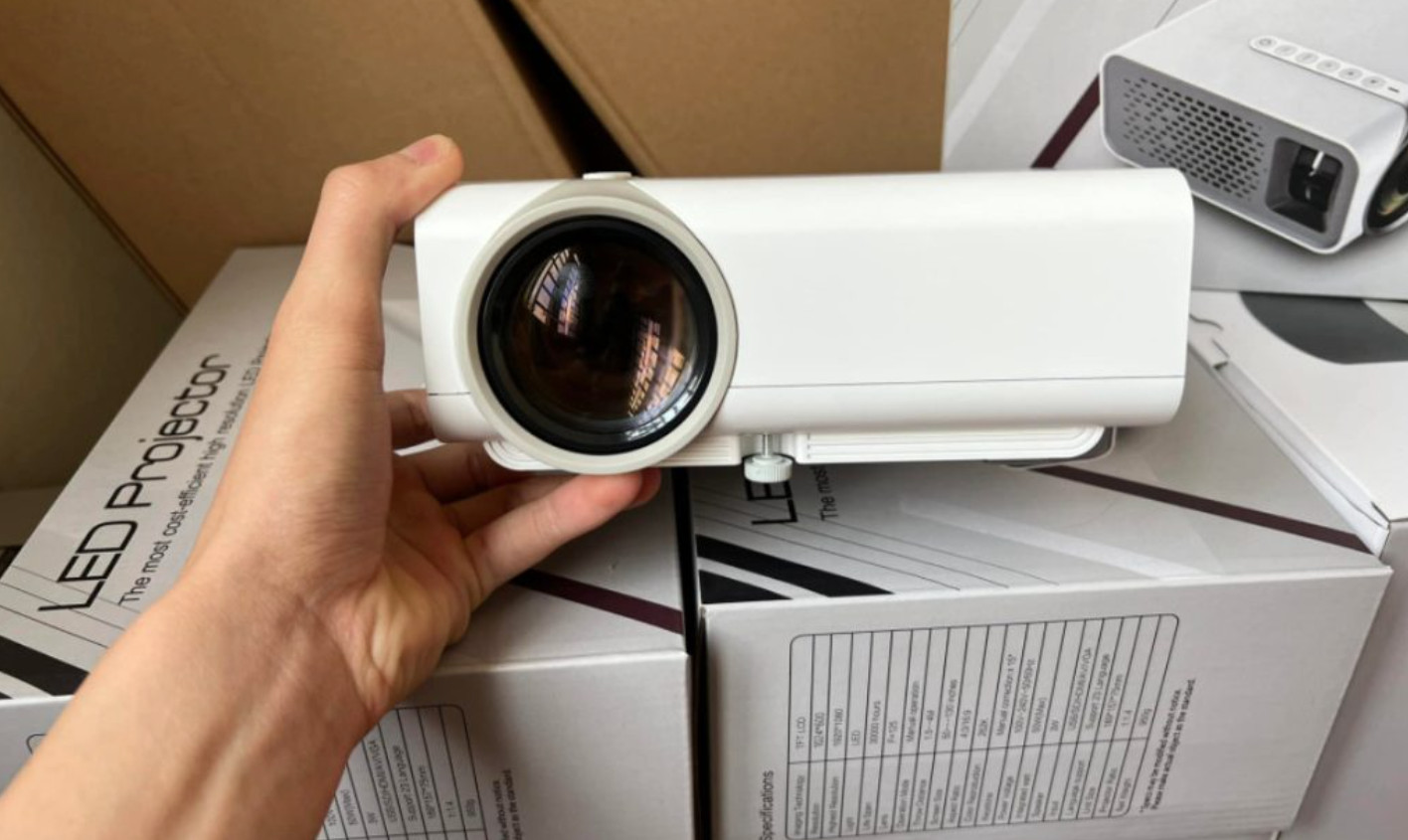
Overhead
Overhead projectors are easy to use. They can create pictures by sending light through films.
These devices feature lenses and mirrors to help flip the images and enlarge them on the screen.
This form of projection was (and continues to be) popular in schools and formal presentations.
Huge texts, scientific diagrams, and other things that do not demand a lot of color detail work well with these models.
An overhead projection system goes through these steps to display the pictures:
- The light travels to the transparency to form an image.
- The reflected rays are, of course, flipped to prevent the image from appearing backward on the screen.
- The light beams pass through the objective lens, enlarging the image and showing it on display.
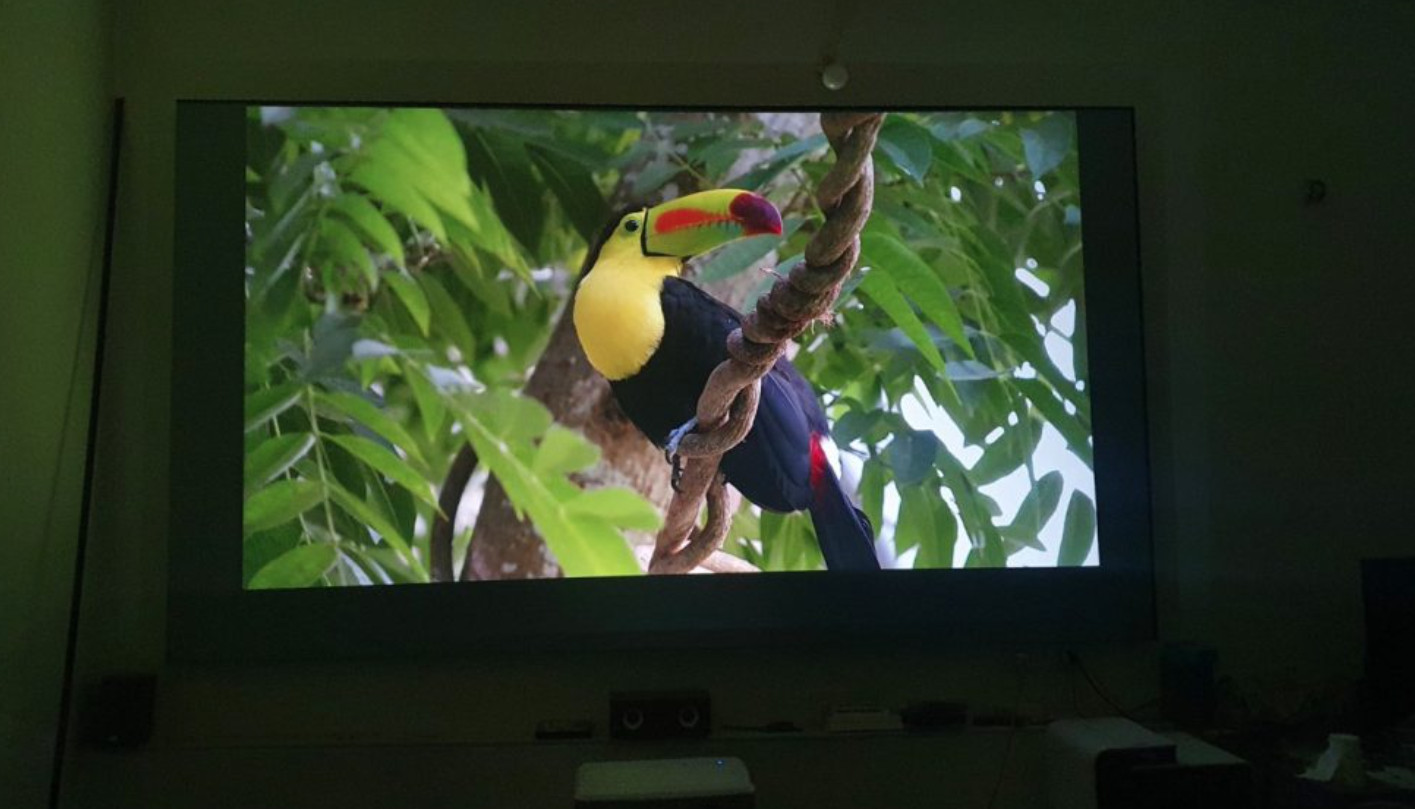
Interactive
Interactive devices, such as UST (ultra-short throw) projectors, are cutting-edge technology.
Like regular devices, they display visual data onto the monitor. There is, nevertheless, one difference: interactive versions allow you to interact with the projected images with special sensors and pens.
There are two ways that the interactive projection works:
- DLP projection
With this technology, the pen can detect patterns on the screen. On the other hand, the patterns can also identify the pen and track its motions.
While working, the device interprets the data and makes the necessary adjustments to the image.
- Infrared projection
Infrared interaction is a simple process. A built-in camera can detect when you move the pen on the screen, and the pen directs the infrared light.
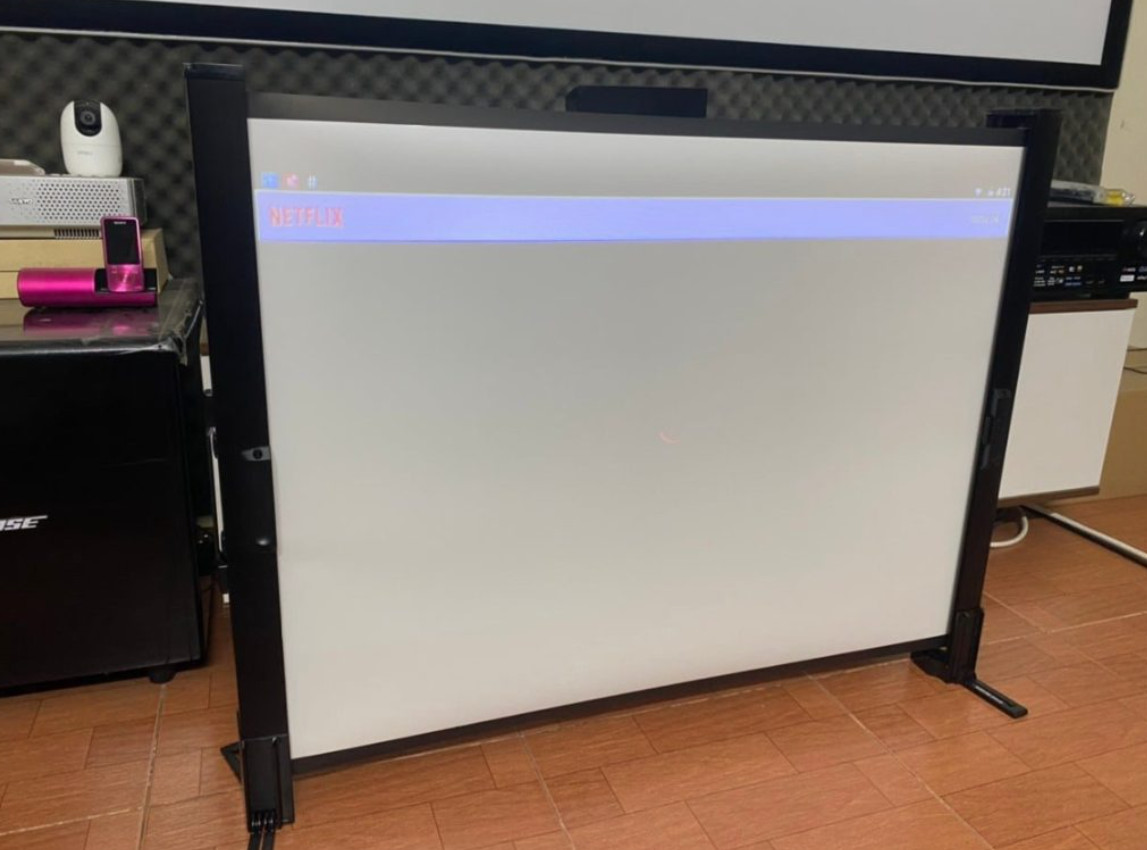
How To Use A Projector?
For meetings, lectures, and presentations, we all require a projector. You can even connect it to your PC and phone. But how can you do that?
With a computer
There are several options for linking a projector to your computer. The most popular methods include:
HDMI cable
An HDMI cable is a smart choice. Most projectors and computers have HDMI ports for this task.
The instructions for linking your projector and computer using the cable are as follows:
- Access the “Start Menu” and click on “Settings.”
- Choose “System” -> “Display” -> “Advanced Settings.”
- If the projector does not appear as a second screen, click “Detect.”
- “Duplicate These Displays.”
- Finally, press the “Apply” button.
The screen of your projector will reflect the desktop. If you’re having problems, try restarting the projector.
DVI
For high-quality movies, DVI (Digital Visual Interface) technology is one of the greatest options.
A DVI cable, in particular, can transmit high-resolution images. Almost all PCs come with DVI ports.
The connection is straightforward. You just need to plug the cable into the computer and projector.
VGA
VGA (Video Graphics Array) is among the oldest techniques for projecting images on a wide screen.
Many computers, though, still have VGA output connectors. So, if your computer has a VGA port, you may use it.
USB
A USB cable has become well-known owing to its simplicity of use. If you want to create or display anything on the projector, you’ll need to use a USB cable to link it to your PC.
To do so, plug one end of the cable into your computer’s USB port and the other into the projector’s port.
After connecting, you may need to run some drivers. After that, simply follow the HDMI’s instructions.
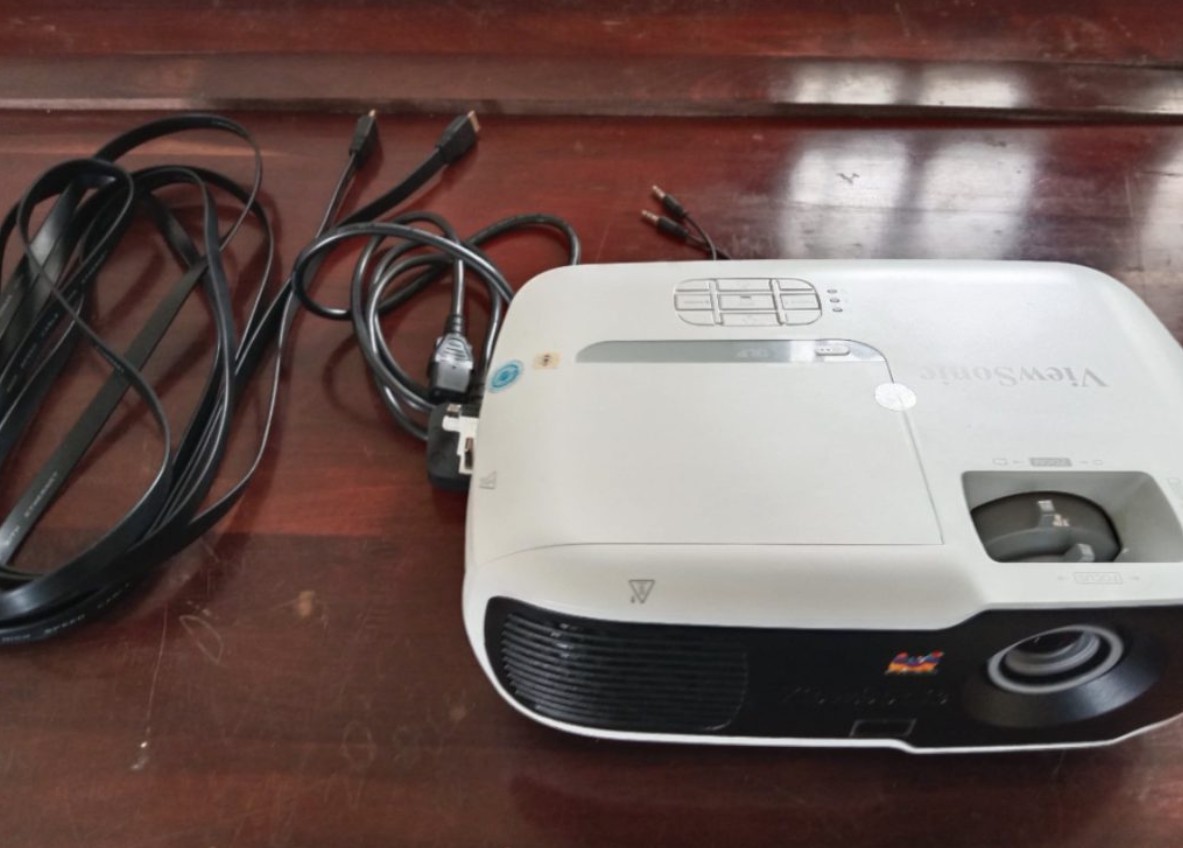
With a phone
Imagine you don’t have access to your computer but yet need to show your presentation. Can you do that with your phone?
There are a variety of ways to link your projector to your smartphone, thanks to modern technology. We will divide it into two methods: wired and wireless connections.
Wired connection
Every Android smartphone has a micro-USB or USB-C port to connect to projectors.
In this case, you can use the USB cable to link your two gadgets and display your presentation on the projection screen from your phone easily.
Wireless connection
If you don’t have a USB cable or your phone doesn’t have any USB ports, you can go for wireless connections instead, like Google Chromecast or Wi-Fi.
However, Wi-Fi seems more practical because your phone must be compatible with HDMI to run Google Chromecast.
Frequently Asked Questions
We have talked about how projectors work and how you can use them. The questions and answers will give you more information about these gadgets.
1. Is a projector better for my eyes than a television?
Yes, projectors are safer for your eyes. The ability of projectors to display larger images reduces eyestrain.
Furthermore, the screens reflect light, whereas televisions emit it. The reflected light is gentler on the eyes, making them comfortable without the tension that the emitted light causes.
2. Are projectors good for gaming?
Yes. You can purchase a large screen to enjoy your games if you can afford it. However, make sure that the machine you buy is suitable for gaming.
Some criteria to look for when buying gaming projectors are fast refresh rate, high resolution, and low input latency.
3. What do I need for the projector to work?
You may use a projector to broadcast pictures from a PC, TV, or other devices.
Most users choose the HDMI cable for the connection. Some alternatives are VGA, USB, and DVI.
4. Can I watch TV on my projector?
Yes. This task is simple. However, you will prepare some additional equipment, especially a cable box.
After that, use HDMI to link it to the projector. Besides, some projectors come with built-in programs that eliminate the need for extra software.
Conclusion
So how does the projector work? It would help if you understood the types of projectors to select the most appropriate projector for your needs.
Each product category has its own set of features that enhance your experience. You can use all of the functions after figuring out how they work.
Hopefully, the guide we have shared can help you determine what you should buy and how to take advantage of all the features.
Thank you for reading!

